Creating quality spaces of scientific synthesis
Bill Dennison ·We recently held an open house in our new University of Maryland Center for Environmental Science Annapolis Office. We had our guests locate their favorite location on a map of the Chesapeake region, and write three words to describe Chesapeake Bay. We then created a word cloud based on these results. Many of the seventy five people who visited our office for the open house remarked about what great space we had put together. These comments were based in a cursory look at the space, but the first groups who have used the Annapolis Office since January in a more intensive manner (single day to multi-day workshops) also raved about the space. This feedback is pleasing to hear, but it also stimulated me to think about what constitutes quality space to conduct productive and enjoyable group meetings and workshops.
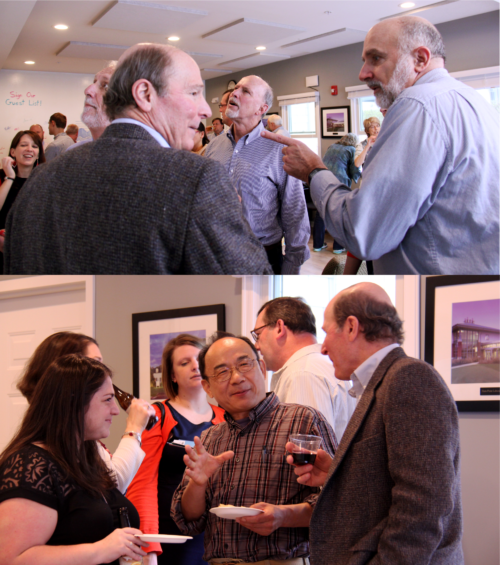
My list of essential features of high quality space for scientific synthesis are the following, with an explanation of each below:
- Spacious conference rooms with extensive white boards.
- Nearby break-out spaces for small group meetings.
- Seamless information technology with sufficient bandwidth for high speed internet.
- Kitchen facilities for coffee and tea, lunches and snacks.
- Walkable restaurants, coffee shops, pubs and accommodation for overnight stays.
1. Spacious conference rooms with extensive white boards. It is important to have well ventilated conference rooms, as the air becomes quite stale when groups of a dozen or so people are working intently, while using laptops in one room for extended periods. Conference room space should allow people to walk around each other and have easy access to white boards for capturing thoughts and producing sketches.
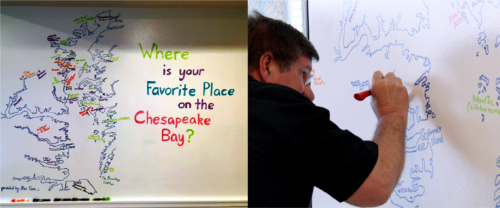
2. Nearby break-out spaces for small group meetings. It is often advantageous to create break-out sessions in addition to the plenary meetings with all participants. In addition, participants often need to step out of workshops to join phone calls without disrupting the rest of the group. These spaces need to be close by and easily accessed for spur of the moment break-outs.
3. Seamless information technology with sufficient bandwidth for high speed internet. A common misperception is that complete isolation is conducive to scientific synthesis. But while a healthy separation from day-to-day concerns is important for immersive thinking, scientists need ready access to data sets and scientific literature available online, often using virtual private networks which require high bandwidth.
4. Kitchen facilities for coffee and tea, lunches and snacks. Caffeine is an important component of activating brain power for many people and needs to be close at hand. In addition, blood sugar levels need to be maintained, thus the proximity to snacks is important. The kitchen areas of synthesis centers are invariably the most trafficked gathering spaces.
5. Walkable restaurants, coffee shops, pubs and accommodation for overnight stays. Having walkable distances encourages scientists to take walks, which serves to stimulate blood flow and creative thinking. For example, Charles Darwin and Albert Einstein were well known for their daily walks. The simplicity of the logistics when people can walk to the synthesis office from their accommodation or to forage for food options allows for seamless self organization. Some argue that alcohol is an important lubricant for creative thinking as well.
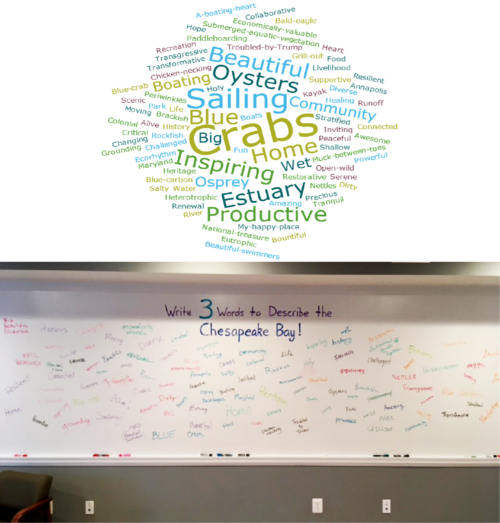
The National Center for Ecological Analysis and Synthesis (NCEAS) in Santa Barbara, CA, SESYNC (National Socio-Environmental Synthesis Center) and our UMCES Annapolis Office share these five features. I wonder about the various other synthesis centers. We had to argue with the former Maryland Governor and the former University System of Maryland Chancellor that SESYNC should NOT be located in Baltimore or on the College Park campus, respectively, to insure these five features were available in our chosen location of Annapolis.
Our new UMCES Annapolis Office is located at 429 Fourth Street, Annapolis. Fourth Street is 'Eastport's Main Street'. Eastport is a peninsula suburb of Annapolis with yacht clubs, sailing supply stores, water view restaurants and pubs, nice houses and a few bed and breakfast establishments. Eastport holds an annual ritual of sock burning in the spring to signify the beginning of the sailing season, so that the sailors can begin wearing topsiders without socks. In the autumn, Eastport challenges Annapolis to a tug-of-war across Spa Creek, which separates Annapolis downtown from Eastport. So part of the charm of our new space is the Eastport location.

This UMCES Annapolis Office is our fourth location--we have moved roughly every five years. Our first location was on West Street near Church Circle where we sublet space from the University of Maryland Baltimore. The highly visible storefront location was ideally suited for visiting West Street restaurants, but parking was an issue, rent was expensive, the office space limited, the conference room was tiny and poorly ventilated and the store front location meant that we had a lot of unwanted solicitation. We had only one full time staff member in this space.
We outgrew the West Street office and we moved to 111 Cathedral St., about a block away. We eventually had the entire third floor of this building, which offered better parking, proximity to restaurants, a nice conference room with windows that opened, and multiple large offices. It wasn't perfect, as the roof and walls often leaked, internet was spotty, the layout was awkward, and we had a lot of unusable space. But it afforded us room to grow and we named this space the Annapolis Synthesis Center with three to four full time staff.
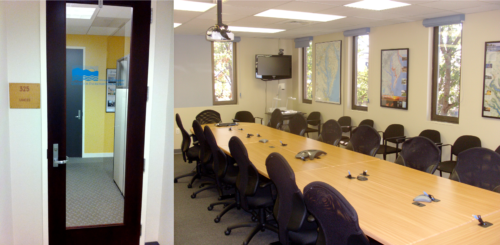
Our third office location was further out on West Street in a new office building at One Park Place associated with a hotel (Westin) and condominiums. We moved because we were successful in obtaining a large National Science Foundation grant to create SESYNC. Our UMCES office was co-located with SESYNC, and we dropped the Annapolis Synthesis Center name to avoid confusion. A different, but good selection of restaurants were available near SESYNC. We joked that we had moved around the Monopoly board and arrived at Park Place, the high rent district. Parking was convenient but became very expensive for the seven full time staff. The conference room in the UMCES space was limited and poorly ventilated, but we often used the more spacious SESYNC conference rooms. We had great high speed internet, although I complained that I could walk into a Starbucks that I had not been to in two years and seamlessly log into the internet, but would have trouble logging back in to the SESYNC internet twenty four hours after my last session. We enjoyed being co-located with SESYNC, but both SESYNC and our Integration and Application Network staff numbers increased and we both became pressed for space. One Park Place could not accommodate our increased space needs, so we set off to find adequate quality space in the Annapolis area, allowing SESYNC to expand into our original space.
We visited many different properties around Annapolis with the goal of finding a location with good parking, nearby restaurants, large conference rooms, high speed internet and easy access. When we first walked into the Eastport office space, we were immediately taken with the open layout with light and airy space. It was quite a distance away from our previous offices along the West Street corridor, but it fulfilled our requirements and had the right fengshui. So our Vice President for Administration Lynn Rehn and Director of Facilities Ray Cho worked with the facilities folks at University of Maryland College Park to negotiate a lease agreement with the building owner. Ray designed the office space with input from Ken Barton, the IAN Program Manager. Our conference room features an extended white board wall, a large high definition monitor instead of a data projector, multiple large windows that open and high speed internet.
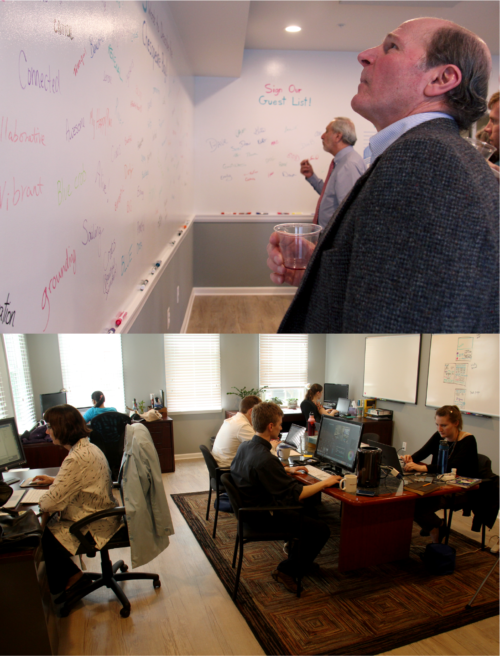
Our previous Annapolis locations served their purpose, but I suspect that our new space will be the highest quality space we have ever had for productive scientific synthesis and communication activities. I am excited that it is turning out so well and am appreciative of the incredible effort that the entire IAN staff have exerted to effect the move from our previous location and outfit the new space. In particular, Ken Barton, Suzi Spitzer and Vanessa Vargas did a lot of organizing and unpacking, Dylan Taillie and Jamie Currie who are based on the Eastern Shore, came to Annapolis multiple times to help out. Kurt Florez, the UMCES Chief Information Officer, was heroic in setting up our computers, internet and telephones. I suspect the space will be in high demand as people begin to appreciate how conducive it is to productive workshops.

About the author
Bill Dennison

Dr. Bill Dennison is a Professor of Marine Science and Vice President for Science Application at the University of Maryland Center for Environmental Science.

